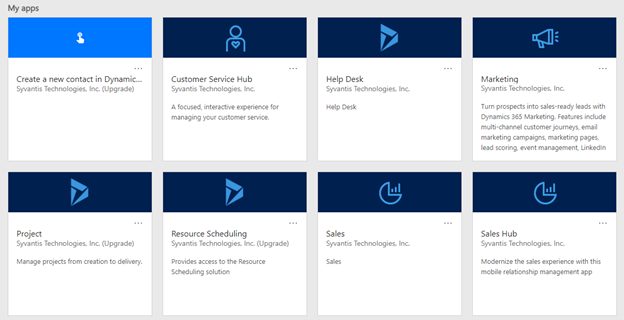We’re considering Dynamics 365, do we need to switch to Dynamics 365 for all business processes?
We often encounter organizations that are looking to upgrade from an existing business system and discover Dynamics 365 without truly understanding what it is. Undoubtedly, Microsoft has designed a vast ecosystem of business applications with Dynamics 365. However, some organizations get confused on whether they can use one or two pieces of it or if they have to transition all of their processes over to Dynamics 365. The short and clear answer on this is no.
While it’s true that Dynamics 365 has an answer to almost every business process at this point and it is a major benefit to use business applications that speak to each other natively, it isn’t necessary to dive head first into Dynamics 365 and overhaul all existing processes.
In fact, trying to move everything to Dynamics 365 at once, may hurt operations and user adoption. Even if you are currently using a legacy Microsoft application like Dynamics GP or Dynamics NAV, it isn’t necessary to switch to Dynamics 365 ERP if you would like to start using Dynamics 365 for Sales or another Dynamics 365 CRM app.
Similarly, you don’t need to switch to using Dynamics 365 for CRM purposes if you want to implement Business Central for ERP processes. In this blog we’ll go through what Dynamics 365 is and recommendations for moving forward with it.
What does Dynamics 365 include?
Dynamics 365 is an umbrella term for a wide range of cloud-based business applications developed by Microsoft. These business applications target specific business areas like sales, operations, customer service, financial management, and much more. While they work great together, Microsoft has purposefully created a licensing system so they can be purchased one at a time and used individually if necessary. While there are price breaks for using multiple Dynamics 365 apps, it is not necessary to do so and integrations can be made to 3rd party systems if necessary.
The biggest benefits to Dynamics 365 apps are that they work together seamlessly, they look very similar (built on Microsoft Power Platform), and share data hosted on the Microsoft Azure Cloud. Dynamics 365 users can log into a web portal through any web browser to access all Dynamics 365 apps available to them.
Switching between apps takes two clicks and credentials are managed through Azure Active Directory making administration easy for admins.
Here is the full list of Dynamics 365 Apps that are currently available:
Commerce
Fraud Protection
Supply Chain Management
Human Resources
Finance (formerly Finance & Operations)
Project Operations
Business Central (formerly Dynamics NAV)
Customer Insights
Customer Voice
Microsoft Relationship Sales
Customer Service
Field Service
Remote Assist
Taking a phased approach
Undoubtedly, the full list of Dynamics 365 applications is daunting and may be overwhelming when considering which processes might map to specific Dynamics 365 apps. This is why we recommend taking a phased approach to implementing Dynamics 365. By utilizing a phased approach, your team will focus on implementing one or two apps that require customization and user training without getting overwhelmed.
Dynamics 365 licensing is designed in a way where you only pay for what your users are using. For example, a company can start with licensed users for Dynamics 365 Sales and purchase additional licenses for Dynamics 365 Service for those users when they are ready to build out the Service app.
What about for organizations using legacy versions of Dynamics CRM or Dynamics ERP? The recommendation for using a phased approach does not change. If you use Dynamics GP or Dynamics NAV for accounting, you can still upgrade your CRM to Dynamics 365 and keep accounting processes in Dynamics GP or Dynamics NAV.
When you’re ready to make the transition from a Dynamics ERP application to Dynamics 365 Business Central, we can help with it.
Alternative cloud options
The number one reason most organizations start to consider Dynamics 365 is because they want to transition systems and storage to the cloud. The value of cloud-based applications like Dynamics 365 is the security and cost-effectiveness of being hosted on the Microsoft Azure Cloud. Getting rid of an on-premise datacenter eliminates maintenance and upgrade costs as well the constant fear of wondering if back-ups are actually being kept.
While Dynamics 365 is a great solution for these issues, there is an alternative solution for organizations using legacy Dynamics applications on-premise. These organizations can always migrate and upgrade their existing systems like Dynamics GP and Dynamics NAV to the Azure Cloud. This solution allows them to get rid of their internal data-center and cut down on hosting costs. When the time is right, they can migrate their hosted data to Dynamics 365 Business Central.
Get started
Whether you are evaluating Dynamics 365 applications or considering migrating your existing Dynamics system to the cloud, our team can provide recommendations and a plan to move forward. Schedule a call with our Dynamics 365 team to get started.



